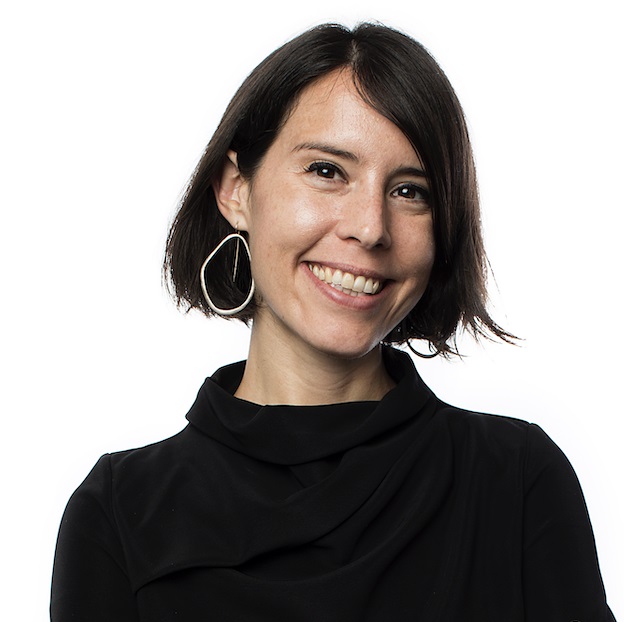
It’s one thing having a great idea in transportation – it’s quite another turning it into game-changing product or solution. It’s not just a question of imagination and expertise: you need cash.
Streetlife Ventures is a venture capital fund which provides money to start-ups and early-stage initiatives which may otherwise struggle to access funding.
The company was recently named Spotlight Venture in the Empower Women in Shared Mobility (EmpowerWISM) Awards, recognised in particular for its potential to help female-founded entities.
Streetlife co-founder and managing director Laura Fox’s background includes time as general manager of Citi Bike at Lyft, growing it from under $40 million in ridership revenue to over $120m.
Free dollars
The first thing the Streetlife team does with any budding mobility entrepreneur is to tell them how to access other funding rather than theirs. Fox will typically advise companies to seek ‘non-dilutive’ financing first, which allows start-ups to access money while retaining full ownership of their company. “We see a lot of people reaching out to us with a deck and an idea that might be incredibly exciting, and maybe the founder has incredible market fit,” Fox says. “But the thing that we tell them immediately is: ‘Before you go out and ask for venture dollars, why don't you go take a look at all of the free dollars that are available from grants?’ Europe and the US have a lot of those dollars available right now.”
This could be used to fund R&D, attract a customer and create a working version of a product, for example, giving the entrepreneur more leverage to attract further investment.

“Every venture investor should be counselling founders on this,” she insists. “It's a really critical and good thing for both the founder as well as for the venture investor as well. We've been mentoring start-ups, advising on some of the things that they were lacking from their current venture investors.”
Streetlife focuses on five sectors, “all at the intersection of cities and climate and drawing on our own background”, says Fox. As well as mobility & logistics, these are: buildings, energy, waste & water and, finally, adaptation.
“When we think about cities as these dense components where half of humanity lives and 70% of emissions come from - those sectors are really critical to change,” she explains. Approximately 75% of the urban infrastructure of 2050 is yet to be built, representing a $5 trillion market opportunity.
With these factors in mind, Streetlife wants to know about the pain point in the industry that the entrepreneur is trying to tackle – what is the problem? Also, how does it help with the climate question? What’s the potential size of the market and how well does the founder understand it? How good are they at selling and bringing on early employees? How viable is the business? What's the current state of the product in terms of technical risk? How high are the regulatory hurdles? How much ethnographic research have they done? How well do they understand the customer profile? What kind of testing has been carried out? What does the pipeline look like? Despite this exhaustive list of questions – and because these companies tend to be at such an early stage - Fox acknowledges with a laugh that there is also an element of faith required: “What do we have to believe that feels reasonable and is in line with the business that the entrepreneur is trying to grow?”
‘Embrace chaos’
All venture capital investors have to look at the business that exists today, but must also see the potential for growth ahead. “There’s going to have to be a lot of pivots as it relates to that,” Fox continues. “So how well has an entrepreneur learned from the pivots that they've already made? What are some of those learnings? What did they do with the information that they gathered? How has that led to the business in front of them today? And so building trust in the general path that someone is heading on - believing that something big is possible - and that this is the founder to really drive for that vision, and that they have the grit and adaptability and all those other attributes, is pretty critical.”
It’s no surprise, perhaps, that Streetlife says it is keen to “embrace chaos”. But what is what does that actually mean? “We see a lot of people who might invest in climate but don't want to invest in urban areas because there is this natural chaos to it,” Fox smiles. “We joke that ‘who owns the kerb?’ could have a different answer in every single city that you're involved in, so there's a degree of complexity to that. But one of the things that we get excited by is navigating that chaos. It has the potential for incredible impact in the streets and neighbourhoods where we all live, as well as for building incredible modes for entrepreneurs. And so there's a great opportunity there on both ends of the spectrum.”
 “One of the things I love about mobility is that you can just go try it” Laura Fox, Streetlife Ventures
“One of the things I love about mobility is that you can just go try it” Laura Fox, Streetlife Ventures
Streetlife has a couple of different measures for success. “We are a returns-focused fund,” says Fox. “We believe intimately that to create the best impact, you have to build the best businesses. And so we're looking for returns, and those returns drive forward impact. So if, at a unit level, you're creating impact in terms of reducing emissions based on vehicle type use, you create the most impact if you can scale the most. We see those things as very intertwined. That’s why we have total available market and also a climate impact hurdle when we're first looking at a company, before we do anything else.”
Making a return for investors is crucial. “We like to think about the value prop[osition] for folks that invest in us as you can have a lot of incredible impact, support founders who are going to be creating the next game-changing initiatives in urban and climate areas, and also see substantial return yourself,” Fox explains.
Making an exit
Venture funds typically look for an exit after 10 years, she says. “Early conversations with an entrepreneur can involve things like how many different customer types are you planning to expand to? What does that look like in the short-, medium- and long-term?”
Mergers and acquisitions in the ‘climate’ space are common at present, Fox adds, with corporates acquiring earlier-stage companies. “Those valuations are quite high, which is really exciting for a lot of entrepreneurs in the space,” she continues. “The IPO [initial public offering] market has been lagging but that's something that, over the next 10 years, we expect to change as climate solutions become the solutions and every company becomes a climate company to some degree.”
A major factor in bringing a solution from concept to deployment is having the right ecosystem in place. Fox and her fellow co-founder and managing director Sonam Velani “both have a life's work network from past roles and we’ve been in this space for a long time”, Fox says.
As well as ties with investors in real estate and infrastructure, the fund has partnerships with pre-commercialisation test beds such as Brooklyn Navy Yard in New York.
“And these are really critical because the private sector - as much as it wants to try and adopt new things - can only really feel comfortable if it's been tested and tried before, otherwise it's expensive, costly and time-consuming for them,” Fox concludes.
“And one of the things I love about mobility is that you can just go try it. I can't tell you how many investors I've spoken to who are invested in something in the same city in which they live - and they call me for diligence. I say: ‘Well, have you gone over there? It's just two miles away. Have you actually tried it and thought about this from the perspective of a consumer?’ I think that there is a lot to gain and to be understood through that kind of experience.”











